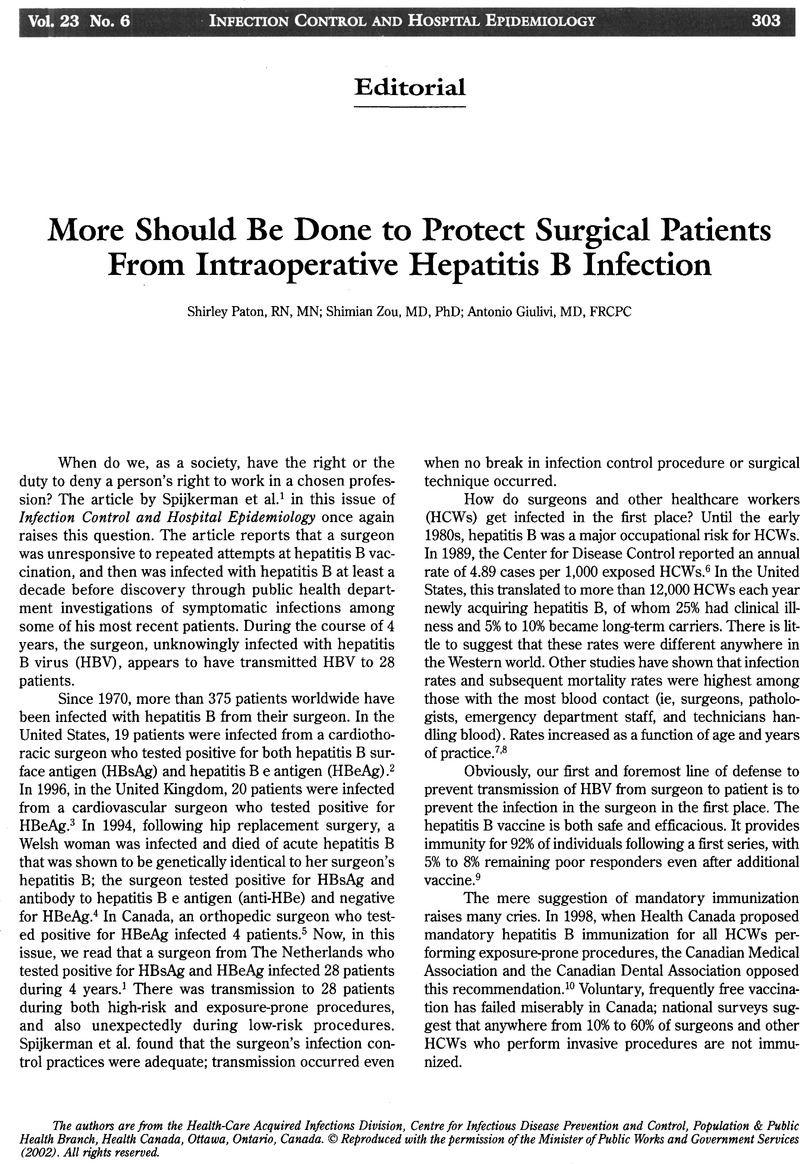Crossref Citations
This article has been cited by the following publications. This list is generated based on data provided by Crossref.
Stringer, Bernadette
2002.
Transmissions From Infected Healthcare Providers to Patients Are Medical Errors.
Infection Control & Hospital Epidemiology,
Vol. 23,
Issue. 11,
p.
638.
Irving, William L
and
Harling, Kit
2005.
Viral Hepatitis.
p.
693.
Alavian, Seyed‐Moayed
Izadi, Morteza
Zare, Ali‐Akbar
Lankarani, Maryam Moghani
Assari, Shervin
and
Vardi, Mohammad‐Mahdi
2008.
Survey of the level of anti‐HBs antibody titer in vaccinated Iranian general dentists.
Special Care in Dentistry,
Vol. 28,
Issue. 6,
p.
265.
Andersen, Bjørg Marit
2019.
Prevention and Control of Infections in Hospitals.
p.
97.



